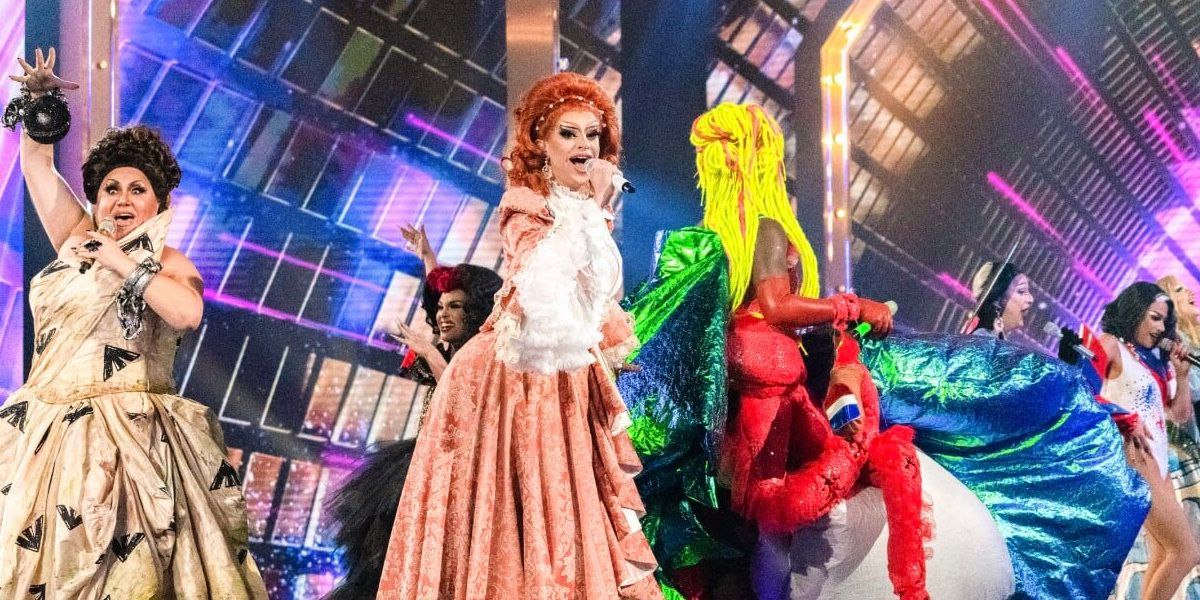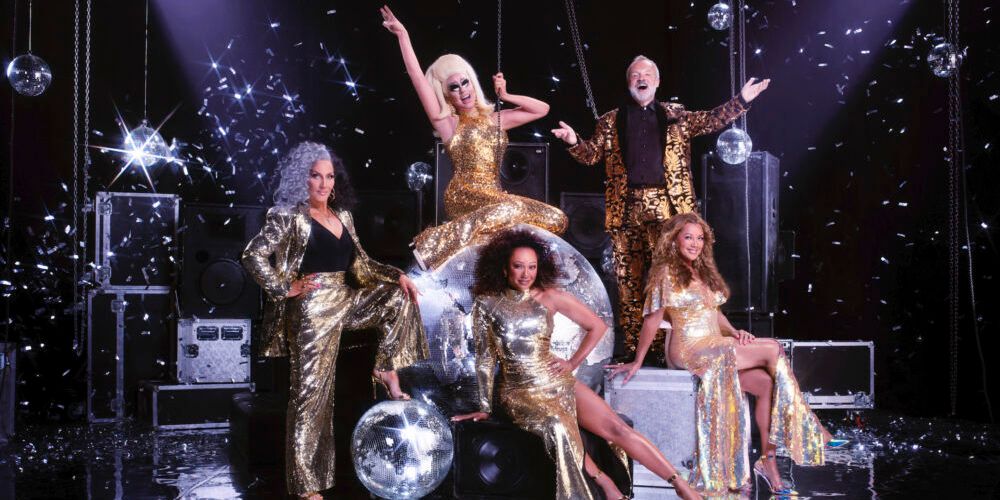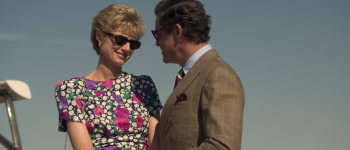In the tradition of kicking off Pride Month with a slate of LGBTQ+ programming, Paramount+ debuted the second season of Queen of the Universe at the top of June. A delightfully campy blend of American Idol and RuPaul’s Drag Race, the reality series, hosted by Graham Norton, features drag queens belting their hearts out to be crowned the Queen of the Universe in the first global all-drag, all-live singing competition. Along their journey, the queens are judged by the series’ Pop Diva Panel, currently comprised of Michelle Visage, Vanessa Williams, Mel B, and the skinny legend herself, Trixie Mattel. While the first season showcased the incomparable artistry and talent of its drag contestants, the show struggled to find its own melody. However, the second season’s premiere showed off a series of changes from the show’s initial run that all suggest the second season is on track to really sing.
- Why We’re Rooting For ‘Love In Paradise’ Couple VaLentine and Carlos
- Joseline Hernandez Arrested For Assault Amid Controversy With Amber Rose on BET’s ‘College Hill’
- Part One of the ‘RHOA’ S16 Reunion Serves Disrespect With a Subpoena
- Not One Man on ‘Vanderpump Rules’ Is a Good Guy
- ‘To Catch A Predator’ Ended 15 Years Ago, But Chris Hansen Never Stopped Hunting
Season Two Lets Its Queens Really Shine
The most significant change to the series’ format is the reduction in the number of contestants. The first season found 14 drag queens competing for the crown, whereas season two debuted with just 10 contestants. While one of the mantras of drag might be “more is more,” having less queens compete actually gives the viewer a better opportunity to connect with the entire cast of contestants. Though it may seem like a slight change, the second season premiere gives each of its contestants about thirty seconds longer to perform their introductory songs than the queens of season one received.
As these performances serve as the queens’ debut to the Pop Diva Panel, the studio audience, and viewers of the show, every second counts. For the judges and studio audience, more performance time means better assessment. For the audience at home, more performance time means more time to form a bond with the queens. This is especially important for the queens who do not make it beyond the premiere episode—if viewers have more time to connect with them, they are more likely to continue to engage with those queens beyond watching the series. Additionally, this is incredibly important for this specific season, since there is no immediately obvious superior chanteuse, like season one’s Ada Vox. Therefore, the increased performance time, as dictated by the smaller cast, allows the queens to really shine.
Restructured Eliminations Create Consistency
Perhaps counterintuitively, reducing the number of competing queens means that a greater percentage of queens get to advance in the competition. At the end of the first season’s two-part premiere, a shocking six queens were sent home without the opportunity for a second chance. This proved especially frustrating for Drag Race fans, as RDPR alum Jujubee was sent home with next to no fanfare. Although the judges did bring La Voix back into the competition, the show still lost almost forty percent of its cast after just one round of performances. In Season 2, though, only two queens were sent home by the end of the two-part premiere. Therefore, a greater percentage of the contestants get to move forward and show off their talent.
Additionally, another significant change comes in how the queens are eliminated. In Season 1, the first group of queens eliminated were sent home exclusively by the decisions of the judges. The show oddly—and seemingly randomly—pulled clusters of three or four queens forward and had the judges announce which contestants from each cluster were eliminated. Not only was the first elimination handled clunkily, but it also conflicted with future eliminations that incorporated the studio audience’s votes. The second season premiere, however, blends the sentiments of the judges and the studio audience more harmoniously from the beginning. The first queen to be eliminated (unnamed to avoid spoilers) is the queen with the lowest number of studio audience votes. The queens are then organized into a top four and a bottom five based on studio audience votes. Rather than the judges then immediately choosing one contestant to eliminate, the bottom five have the opportunity to perform one more time to prove they deserve to be in the competition. After performing the iconic “Wannabe” in a Spice Girls Showdown, each judge individually saves one of the contestants, leaving one queen to be eliminated. This elimination format not only better incorporates both the audiences’ and the judges’ perspectives, but it also provides structure to the first season premiere’s confusing elimination. Should the series continue with this format, the show’s second season is sure to have a more consistent competition.
Mel B Spices Up the Pop Diva Panel of Judges
As suggested by the Spice Girls Showdown, Season 2 is already making excellent use of its newest judge, Mel B aka Scary Spice. Mel B replaces the first season’s Leona Lewis, joining returning judges Michelle Visage, Vanessa Williams, and Trixie Mattel. While Lewis was a fine judge, who approached her critiques with generosity and grace, her sentiments were often shared by most of the panel. In the first season, it was usually only Visage who assessed the queens with sharper critiques. This season, though, Mel B has already spiced up the series by offering a unique perspective that often dissents from the other judges.
For example, after Jazell Royale’s performance of Adele’s “Easy on Me,” Visage, Williams, and Mattel all praise the queen’s drag aesthetic and vocals. Mel B, however, follows up her approval of Royale’s look with harsh criticism of the vocal performance, calling Royale’s performance a bad mistake and a bad song choice. Mel B’s different perspective not only adds entertainment value to the Pop Diva Panel, but also allows for a more well-rounded assessment of the talent on stage. Not only do the studio audience and audience at home get to hear more diversity in opinion, but the queens also have a better opportunity to grow and develop as performers thanks to Mel B’s inclusion. And, after all, the best thing about Queen of the Universe is that it is a mainstream platform on which to showcase drag artistry and talent. As demonstrated by the second season premiere’s changes to the number of contestants, how eliminations are carried out, and the Pop Diva Panel, the series’ second season is shaping up to carry a high note throughout its run.
Source: https://dominioncinemas.net
Category: REALITY TV












